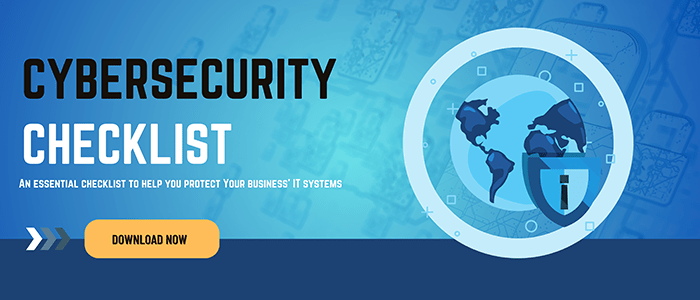What is Cyber Security and Why Does Your Business Need It?

The estimated cost of cyber crime is now around $600 billion USD a year.
Despite the threat that cyber crime poses to businesses, many companies still say they lack the knowledge and tools needed to protect them from cyber threats. It’s clear that a lack of education still holds companies back from protecting their data.
So, what is cyber security and why does your business need it? We take an in-depth look at the subject below.
What Is Cyber Security?
At its most basic definition, cyber security is the discipline of protecting computer systems and their users from attempts to compromise them, whether by an attack or through unauthorized access.
This definition is deceptively simple and only scratches the surface of the subject. Cyber security encompasses a wide range of technologies and strategies designed to protect the modern business from the ever-evolving field of cybercrime.
The growth of cloud computing has made cybercrime more attractive, and sensitive data is now more accessible online than ever before. Businesses that use the cloud to store their data could be creating additional risk for cyberattacks.
Far from something only the tech-minded need to understand, cyber threats are fast becoming a fact of life. Businesses play a key role in safeguarding the digital identities of their customers from hackers and data thieves. By neglecting cyber security, they expose not only themselves to risk, but also their customers.
What Do Cyber Security Threats Look Like?
Cyber threats come in many different forms. They evolve daily, locked in a perpetual arms race with cyber security technologies.
One of the most commonly encountered cyberattacks is the D/DoS, or (distributed) denial-of-service attack. This is a low investment, high yield attack that overwhelms the victim’s servers with a flood of excessive requests.
D/DoS attacks are a nuisance tactic compared to more advanced techniques. Where DoS attacks typically disrupt a service, D/DoS attacks can cause permanent damage, compromise data, and extort payment.
When a cyberattack consists of an ongoing, undetected attack, it’s described as an advanced persistent threat (APT). An APT can remain undiscovered for years — all the while giving the attacker access to the victim’s information.
Let’s take a closer look at a few other common forms of cyberattack:
Malware
Malware encompasses most of the cyber threats that make it into the public consciousness, including Trojan Horse viruses, ransomware, and adware.
Most malware is delivered simply through the victim’s cooperation. Unbeknownst to them, they may click on a suspicious link or download an attachment carrying a viral load, which infects the entire system. Malware’s impact can range from an annoying nuisance to an APT that hides in the system for years, funneling information to its owners.
Backdoor
Backdooring involves bypassing authentication to access to a company’s systems and databases through user privileges. Backdoor routes may exploit loopholes or oversights in the software code and are sometimes obtained via malware. A backdoor may also be the result of a programmer leaving themselves a method of accessing software they develop for their client.
Social Engineering
Social engineering is a category unto itself, but these manipulation tactics are the cons of cyber security. A well-known example is “phishing”. Phishing is the act of tricking victims into voluntarily giving up their personal information, usually by spoofing an email and login page that resembles a trusted site.
Why Your Business Needs Cyber Security
Knowing what cyber security is only scratches the surface of why it matters for businesses. For that, look to real-world examples of major cyber security incidents. Bear in mind, however, that even these represent only a minority of the thousands of cyber security incidents occurring every day.
A textbook example of a high-profile cyber security incident was the spread of WannaCry ransomware in 2017. The WannaCry virus, believed to have originated in North Korea, crippled services across the world, including the UK’s National Health Service.
WannaCry left vital services suspended, and caused an estimated $4 billion USD in damages on a global scale. WannaCry is the perfect illustration for the anatomy of a cyber security incident. This virus, like most others, caused service disruption, revenue loss, and compromised data.
Despite the increased awareness brought about by WannaCry, the average business still struggles to remain on top of the latest software developments. Businesses with poor backup and business continuity policies are at an even greater risk.
What Can You Do to Improve Cyber Security?
Knowing what cyber security threats your business faces is only half the solution — it’s also crucial to know what you can do about them.
On the technical level, a business needs the technology to counter cyber security threats. This means upgrading from legacy software, keeping software up to date, deploying security plugins, creating strong passwords, and using secure by design software.
Yet all the technical preparations in the world won’t protect a business that doesn’t also maintain a culture of cyber security. Human nature remains one of the best tools that malicious actors can leverage against a secure network.
Training your workforce on cyber security prevention can equip them to recognize security threats, resist social engineering attempts, and report potential cyber security risks.
Data handling awareness should also be high on the list of education topics. Just as many cyber security incidents stem from poor data handling practices as they do from malicious attacks. Historical examples of such incidents include leaving laptops unattended in public places and mailing out unencrypted customer data. Data of this type could include customer addresses, names, and even bank account details.
Businesses can also shift their cyber security culture by enacting tighter access controls. A database with excessive high-level access privileges is inherently less secure than one that can only be accessed by a small handful of vetted employees.
The Crucial Importance of Cyber Security in 2019
Cyber security has become an integral part of any business strategy in 2019 and it’s essential to safeguarding businesses and individuals against data loss, business disruption, and even legal action. Businesses that aren’t keeping up with cyber security standards put their companies at risk.
Protect your business from cyber threats by acting now. Contact PCG IT today for our free, no-risk security assessment.




